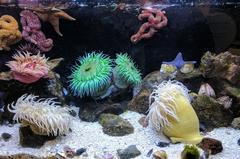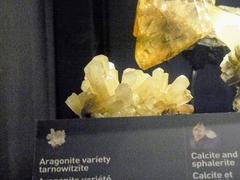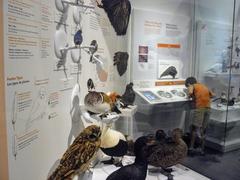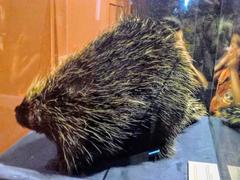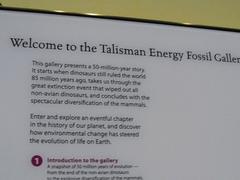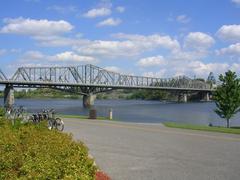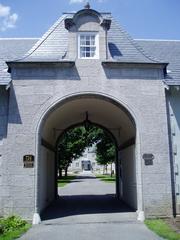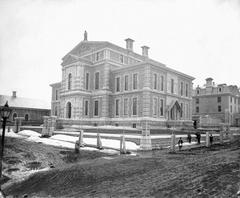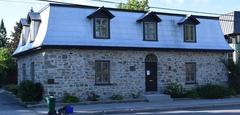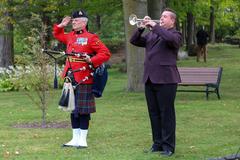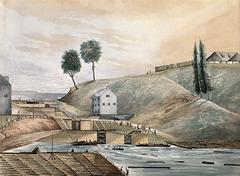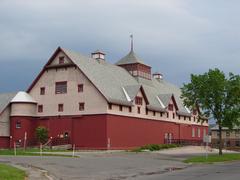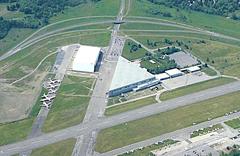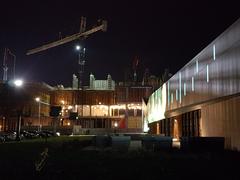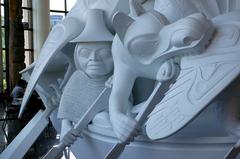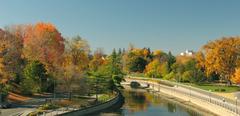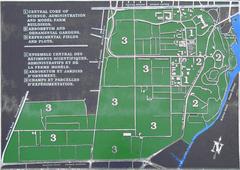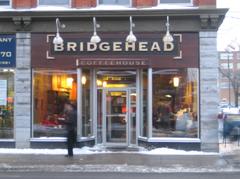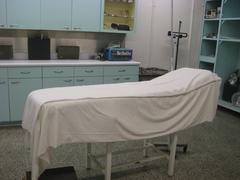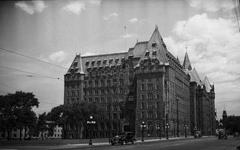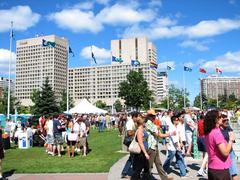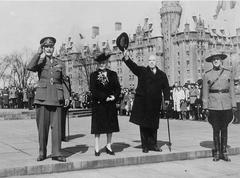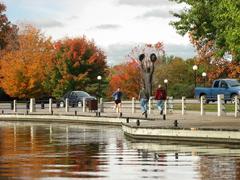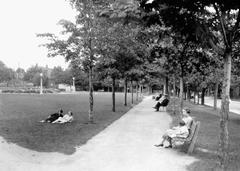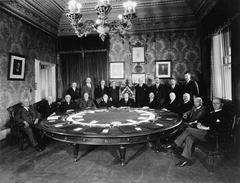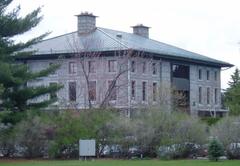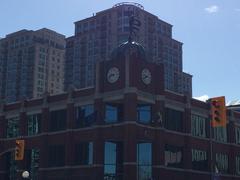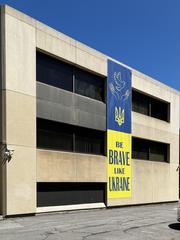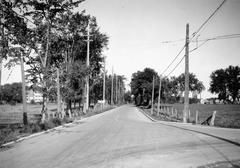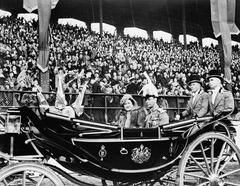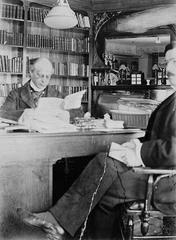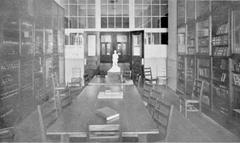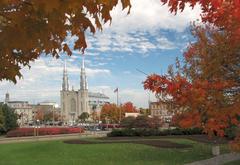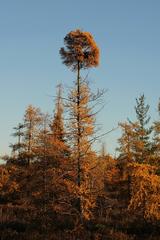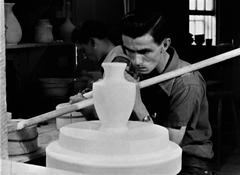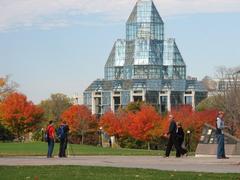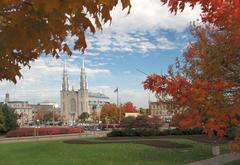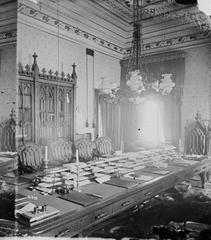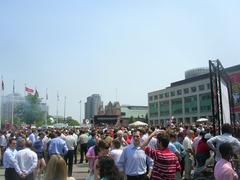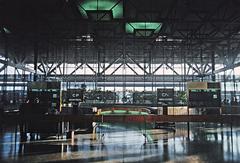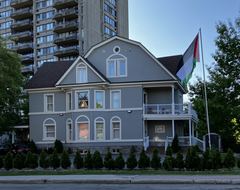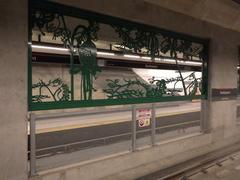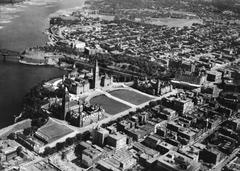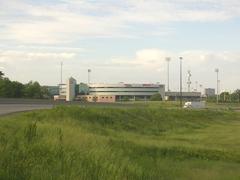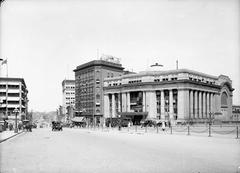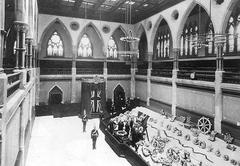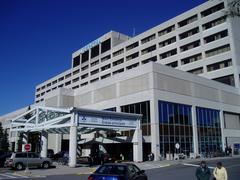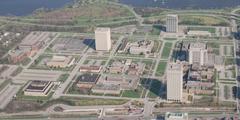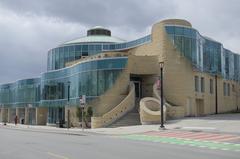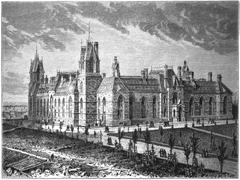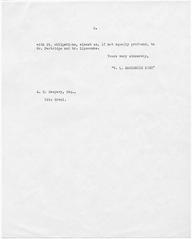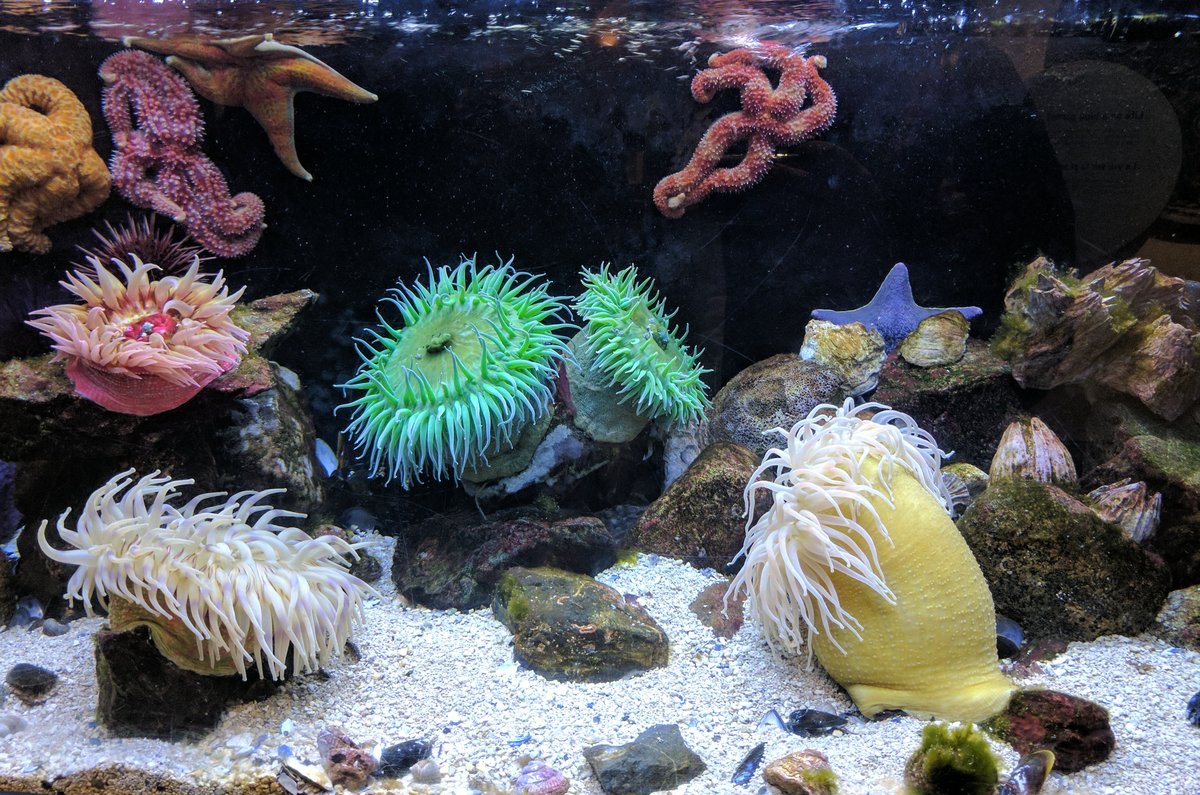
Victoria Memorial Museum Building: Visiting Hours, Tickets, and Ottawa Historical Sites Guide
Date: 14/06/2025
Introduction
The Victoria Memorial Museum Building (VMMB), home to the Canadian Museum of Nature, stands as a remarkable symbol of Canadian heritage, architectural achievement, and scientific progress. Located in downtown Ottawa, this National Historic Site invites visitors to explore Canada’s natural history amid a stunning blend of historic and modern architecture. Whether you are a history buff, architecture enthusiast, family traveler, or nature lover, the VMMB offers an enriching experience at the heart of the nation’s capital (Parks Canada Directory of Federal Heritage Designations; Canadian Museum of Nature).
Table of Contents
- Overview and Significance
- Historical Foundations and Development
- Architectural Vision and Renovations
- Visiting Information
- Nearby Ottawa Historical Sites
- Sustainability and Environmental Initiatives
- Frequently Asked Questions (FAQs)
- Summary and Final Tips
- References
Overview and Significance
As Canada’s first purpose-built national museum, the VMMB embodies the country’s dedication to scientific inquiry and public education. Its distinctive Tudor-Gothic and Scottish Baronial architecture, intricate stonework, and carved wildlife motifs celebrate the nation’s natural legacy and evolving identity. The building’s designation as a National Historic Site in 1990 underscores its importance in Canadian museology and architectural conservation (Parks Canada Directory of Federal Heritage Designations).
Historical Foundations and Development
Origins and Purpose
The origins of the VMMB can be traced back to the early 20th century, when the Geological Survey of Canada’s expanding collections demanded a dedicated facility. In 1901, following Queen Victoria’s death, the Canadian government authorized the construction of a museum both as a tribute to her reign and as a national center for scientific collections and research. The chosen site was a 3.6-hectare plot, selected for its proximity to Parliament Hill and its ample space for future expansion (Canadian Museum of Nature).
Construction and Early Challenges
Construction began in 1905 under Chief Architect David Ewart. The project drew on local materials like Nepean brown stone and Manitoba’s Tyndall limestone, with Scottish stonemasons lending their expertise to the intricate carvings. Yet, the building faced significant structural setbacks due to Ottawa’s unstable clay soil, resulting in subsidence and the eventual removal of the central tower in 1915 for safety reasons. Despite these challenges, the building was completed in 1911 and opened to the public soon after, quickly becoming a leader in exhibition techniques and museological innovation.
Role in Wartime and Institutional Evolution
The VMMB’s national significance was cemented during World War I, when it served as the temporary seat of the Canadian Parliament after the 1916 fire destroyed the Centre Block. The museum also housed the National Gallery of Canada and other institutions before evolving into the Canadian Museum of Nature. The building’s flexibility and resilience highlight its central role in Canada’s scientific and cultural development (Library and Archives Canada).
Architectural Vision and Renovations
Design and Canadian Identity
David Ewart’s vision for the VMMB was inspired by the Scottish Baronial, Tudor, and Gothic Revival architectural styles. The structure features a crenellated roofline, decorative buttresses, and a symmetrical façade. Carvings of beavers, moose, and native flora are integrated throughout, celebrating Canada’s natural heritage. The use of Tyndall stone, rich with fossils, connects the building’s fabric to the country’s geological history (Canadian Museum of Nature).
The Queen’s Lantern Modern Addition
A major renovation from 2004 to 2010 modernized the VMMB while preserving its historic character. The most iconic addition is the Queen’s Lantern, a glass atrium installed where the original tower once stood. Unveiled by Queen Elizabeth II, the Lantern blends contemporary glass architecture with the historic stonework, enhancing visitor flow and accessibility while symbolizing renewal and transparency. The Lantern’s butterfly staircase, panoramic city views, and natural daylight make it a highlight for visitors (Government of Canada Press Release).
The renovation project won the Canadian Green Building Award for its sustainable design and commitment to heritage conservation (Canadian Architect).
Visiting Information
Hours and Admission
- Hours: Open Tuesday to Sunday, 9:30 AM – 5:00 PM (extended hours on Thursday until 8:00 PM). Closed Mondays and statutory holidays. Always confirm current hours on the official website.
- Tickets: General admission is $15 (adults), $12 (seniors 65+), $10 (youth 6-17), and free for children under 6. Ottawa residents and all visitors on Thursday after 4:30 PM enjoy free admission. Timed-entry tickets are strongly recommended, especially during weekends and holidays (Canadian Museum of Nature Visitor Info).
Accessibility and Visitor Services
- Accessibility: The museum is fully accessible for wheelchairs and strollers, with elevators, ramps, and accessible washrooms. Service animals are welcome, and assistive listening devices are available.
- Family-Friendly Facilities: Stroller rentals, family restrooms, nursing rooms, and coat check/lockers are provided.
- Multilingual Information: Signage and exhibit text are available in English and French.
Guided Tours and Educational Programs
- Public Tours: Daily guided tours are included with admission, offering insights into the building’s history and collections.
- School Programs: Curriculum-linked workshops and tours are available in both official languages.
- Special Events: The museum regularly hosts lectures, seasonal festivals, and family activities. Check the events calendar for current offerings.
Dining, Shopping, and Amenities
- Nature Café: Serves a variety of snacks, lunches, and beverages, including vegetarian and gluten-free options.
- Museum Boutique: Sells books, educational toys, jewelry, and Canadian-made souvenirs.
Outdoor Spaces and Photo Opportunities
The VMMB’s landscaped gardens and green spaces are ideal for relaxation and photography. The building’s grand entrance, moose head sculptures, and the Queen’s Lantern are popular photo spots, especially during golden hour or sunset.
Nearby Ottawa Historical Sites
The museum’s central location makes it easy to combine your visit with other Ottawa landmarks, including:
- Parliament Hill: Canada’s political heart (Ottawa Tourism)
- National Gallery of Canada: Renowned for its art collections
- Rideau Canal: A UNESCO World Heritage Site
- ByWard Market: Ottawa’s historic market district
Sustainability and Environmental Initiatives
The VMMB’s recent renovations incorporated energy-efficient systems, geothermal heating, green roofs, and sustainable materials, reflecting the museum’s commitment to environmental stewardship. Exhibits and programs emphasize conservation and responsible resource management (Canadian Museum of Nature Sustainability).
Frequently Asked Questions (FAQs)
Q: What are the Victoria Memorial Museum Building’s visiting hours?
A: Open Tuesday to Sunday, 9:30 AM–5:00 PM (Thursdays until 8:00 PM); closed Mondays.
Q: How much do tickets cost?
A: Adults $15, seniors $12, youth $10, children under 6 free. Free admission Thursday after 4:30 PM and for Ottawa residents.
Q: Is the museum wheelchair accessible?
A: Yes, full accessibility with ramps, elevators, and accessible washrooms.
Q: Are guided tours available?
A: Yes, daily tours are included with admission.
Q: Can I take photographs in the museum?
A: Photography for personal use is permitted in most areas; flash and tripods are restricted.
Q: Are there dining and shopping options on-site?
A: Yes, the Nature Café and Museum Boutique are available.
Q: What are some nearby attractions?
A: Parliament Hill, the National Gallery of Canada, and the Rideau Canal.
Summary and Final Tips
The Victoria Memorial Museum Building is a cornerstone of Canadian culture, offering a seamless blend of historic architecture and cutting-edge museum innovation. Its role as Canada’s first national museum, temporary seat of Parliament, and a hub for scientific research cements its place in the nation’s story. The Queen’s Lantern addition, award-winning sustainability initiatives, and focus on accessibility ensure that every visitor enjoys a memorable and inclusive experience.
For the most rewarding visit:
- Check current hours and ticket options before arrival.
- Book tickets online for guaranteed entry.
- Arrive early to enjoy quieter galleries.
- Explore nearby Ottawa historical sites for a full day of discovery.
- Download the Audiala app for guided tours and insider tips.
References
- Canadian Museum of Nature: Our Building
- Government of Canada Press Release on Renovation
- Parks Canada Directory of Federal Heritage Designations
- Canadian Museum of Nature Visitor Information
- Ottawa Tourism - Canadian Museum of Nature
- Canadian Architect: Green Building Award
- Canadian Museum of Nature Sustainability
- Library and Archives Canada: Parliament Fire 1916
- lifeontheroam.com: Museums and Cultural Attractions in Ottawa
